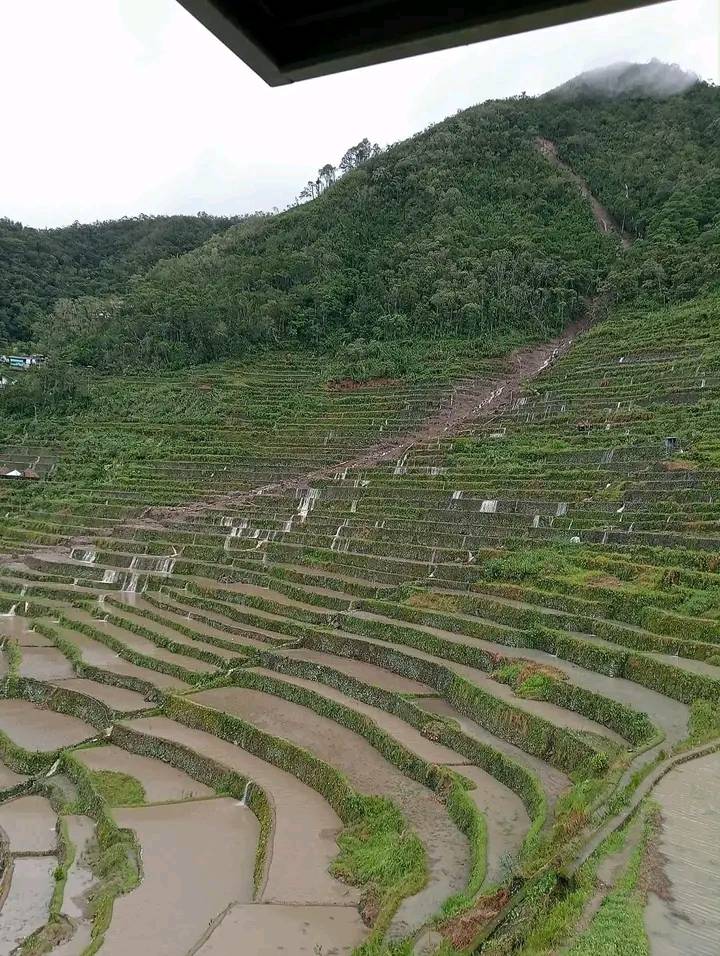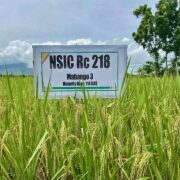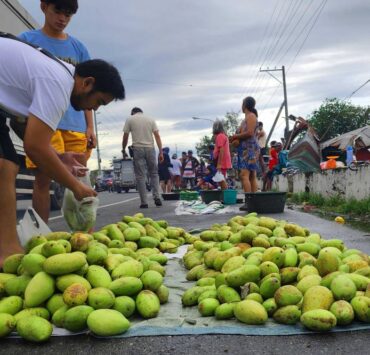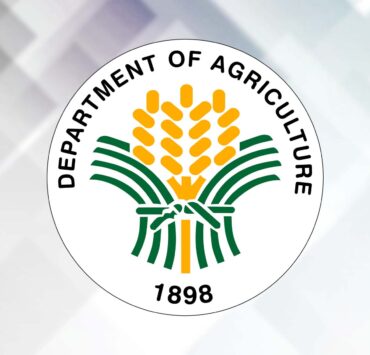‘Uwan’ scars rice terraces of Ifugao

BAGUIO CITY—The centuries-old rice terraces of Ifugao—a World Heritage Site of the United Nations Educational, Scientific and Cultural Organization (Unesco) and a living symbol of the Cordilleras’ indigenous heritage—were damaged by mud and rockslides as Supertyphoon “Uwan” (international name: Fung-wong) swept through northern Luzon early this week, reports from local officials showed.
Runoff rainwater from Uwan’s heavy rain burst through the terraces’ canal systems, unleashing landslides that ravaged the famed paddies in the towns of Banaue, Mayoyao, Hungduan and Kiangan.
These “living relics,” carved by ancestors into the mountain slopes, have stood for centuries as testaments to Ifugao ingenuity—until Uwan laid bare their fragility.
While social media was flooded with images of destruction from Mountain Province and Kalinga, Ifugao remained largely silent until Tuesday night, when rescuers reached isolated areas and confirmed casualties in the province.
Romeo Heppog, the village chair overseeing the Batad rice terraces in Banaue, sent photos of the erosion that damaged sections of the terraces to the Cordillera office of the Department of Tourism (DOT), the Inquirer learned on Wednesday.
“[Heppog’s] text message described the huge damage incurred because of the typhoon and asked for help in rebuilding the terraces,” said a DOT employee, who requested not to be identified pending an official statement from the agency.
According to lawyer Jennilyn Dawayan, regional director of the Department of Agriculture (DA), the agency is now assessing the extent of the damage.
The terraces produce heirloom rice prized for its flavor and cultural value, once exported abroad until the pandemic halted global trade in 2020.
In peril
Many towns in Ifugao remain isolated, with power and telecommunications down, delaying full reports to officials in Baguio City and Metro Manila.
The Batad rice terraces, among the most photographed landscapes in the Cordillera, feature amphitheater-like paddies carved from the mountainside and sustained by an indigenous irrigation system.
The site also suffered heavy storm damage in 2010 and 2012, prompting residents to launch the Save the Rice Terraces Movement.
In 2011, then Ifugao Rep. Teodoro Baguilat Jr. estimated that full rehabilitation would require over P100 million to replace 102,663 cubic meters of soil and debris, repair 5.1 kilometers of irrigation canals, and support indigenous farmers’ livelihoods.
Since the abolition of the Ifugao Terraces Commission (ITC) in 1999 and the Banaue Rice Terraces Task Force in 2002, the provincial government has been solely responsible for management of the terraces, which are owned by generations of Ifugao families.
As a World Heritage Site, the Philippines is obliged under Unesco to preserve the terraces, which the Ifugao Archaeological Project dates to more than 400 years old—though early scholars once believed they were 2,000 years old.
Unesco, in its website, said the rice terraces were declared National Treasures in Presidential Decree Nos. 260 (1973) and 1505 (1978) and are also protected by Republic Act No. 10066 or the National Cultural Heritage Act of 2009.
Commission revival
“The terraces have long been protected and managed through traditional ancestral land use management traditions of the indigenous Ifugao community. Individual terraces are privately owned and protected through ancestral rights, tribal laws and traditional practices,” Unesco said.
According to Jose Dado, assistant regional director of the Department of Economy, Planning and Development, the Cordillera Regional Development Council is reviewing proposals from the DOT and the Ifugao provincial government to revive the ITC.
“Ifugao has the sole task of managing the terraces but it lacks funds,” Dado told the Inquirer, noting that a revived ITC would be attached to the Office of the President.
Another proposal from Antonio Tabora, Presidential Assistant for the Cordillera Administrative Region, calls for a Cordillera Rice Terraces Development Authority, which would require legislation.
Tabora suggested the formation of an authority with regular funding to preserve not just the Ifugao terraces, but other terraces in the region like those in Mountain Province, Dado said.
Ifugao currently has the highest number of typhoon-related fatalities in the Cordillera, with nine of 16 total deaths recorded as of Wednesday, a situational report from the Department of Social Welfare and Development and the Office of Civil Defense showed.
The remaining deaths include three in Benguet and two each in Kalinga and Mountain Province. Two persons remain missing in Kalinga.
At least 13 people were hurt from typhoon-related incidents while 2,177 families (7,131 people) were displaced and more than 1,100 houses were damaged.
Uwan, however, did not severely disrupt the supply of salad vegetables from Benguet, Dawayan said.
The DA’s initial report on Wednesday estimated 837.63 metric tons of crop losses valued at P19.23 million, affecting 531.97 hectares of rice, corn and vegetable farms.

















